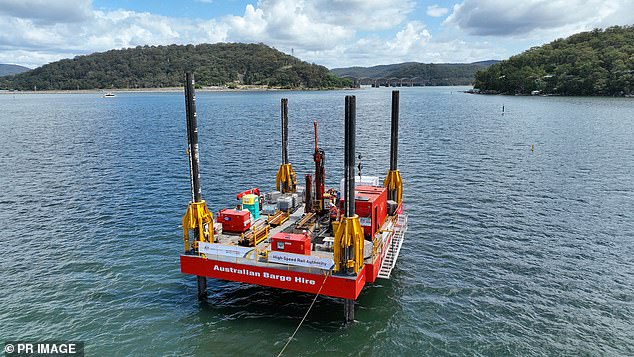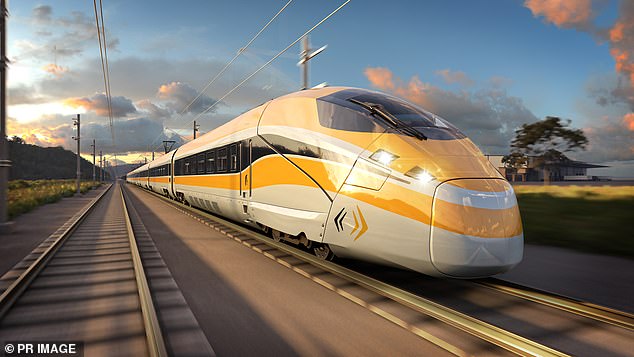Rail passengers hoping to travel across Australia’s east coast in record time could be one step closer when preliminary drilling officially begins.
The long-awaited East Coast rail project will connect Brisbane, Sydney, Canberra, Melbourne and the regional communities in between.
Drilling has begun off the New South Wales central coast to determine the route for the first stage of the project, to connect Newcastle with Sydney.
Two drilling rigs were installed on Monday at the Hawkesbury River and at Brisbane Water in Gosford, with plans to drill six wells to a depth of 140 metres.
They will collect rock and sediment samples to inform the design and depth of potential rail tunnels.
Some 27 boreholes will be dug in the Sydney to Newcastle region, supported by the federal government’s High Speed Rail Authority.
The government has committed $500 million to planning and protecting the corridor for the first stage of the project.
The long-term infrastructure project would ultimately allow passengers to travel between major cities and major regional cities at more than 250 km/h.
The long-awaited East Coast rail project will connect Brisbane, Sydney, Canberra, Melbourne and the regional communities in between (pictured is an artist’s impression)

Two drilling rigs (pictured) were installed on Monday at the Hawkesbury River and at Brisbane Water in Gosford, with plans to drill six wells to a depth of 140 metres.
Transport Minister Catherine King said the project would help shape the nation.
“High-speed rail means generations of new opportunities for regional Australia, creating more jobs in more places and giving people greater choice in where to live, work, study and play,” he said.
High Speed Rail Authority chief executive Tim Parker said the project would provide fast, comfortable and reliable travel.
“Right now we are working on how to build a new railway in complex areas and the engineering challenges we would face,” he said.
The feasibility study for the Newcastle to Sydney stage will be presented at the end of the year.

